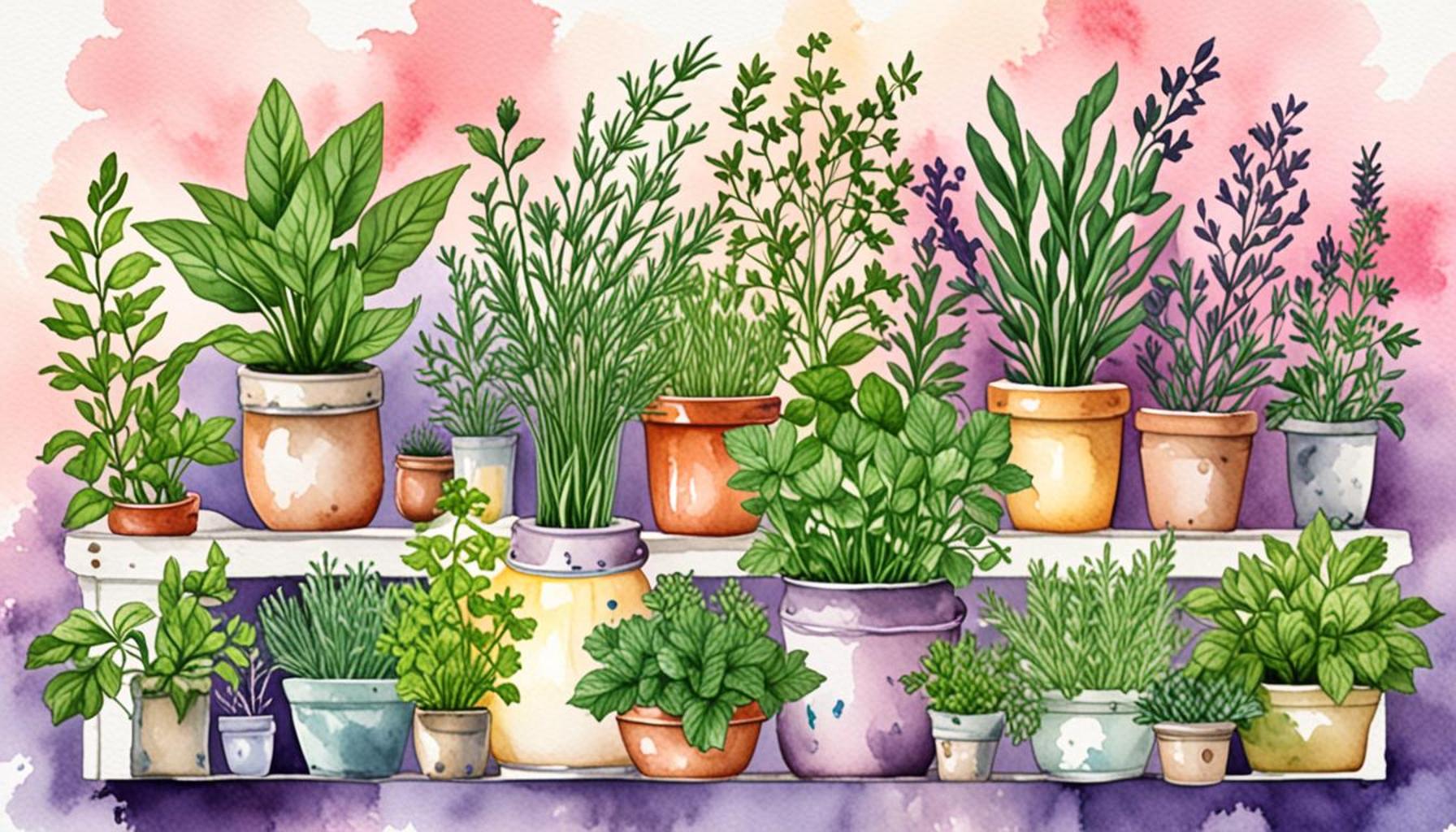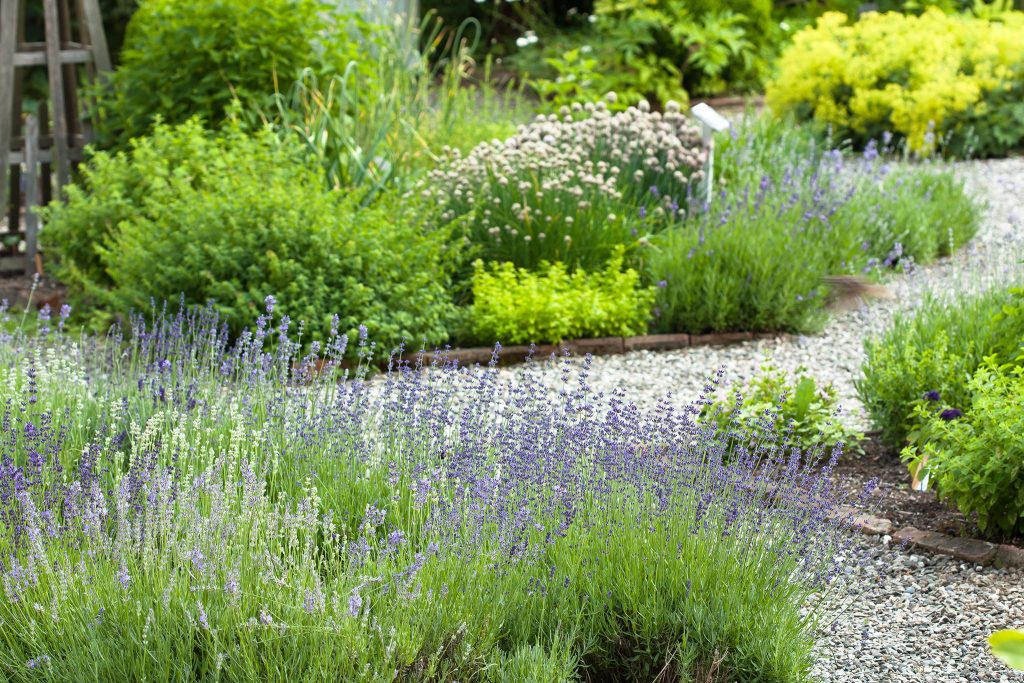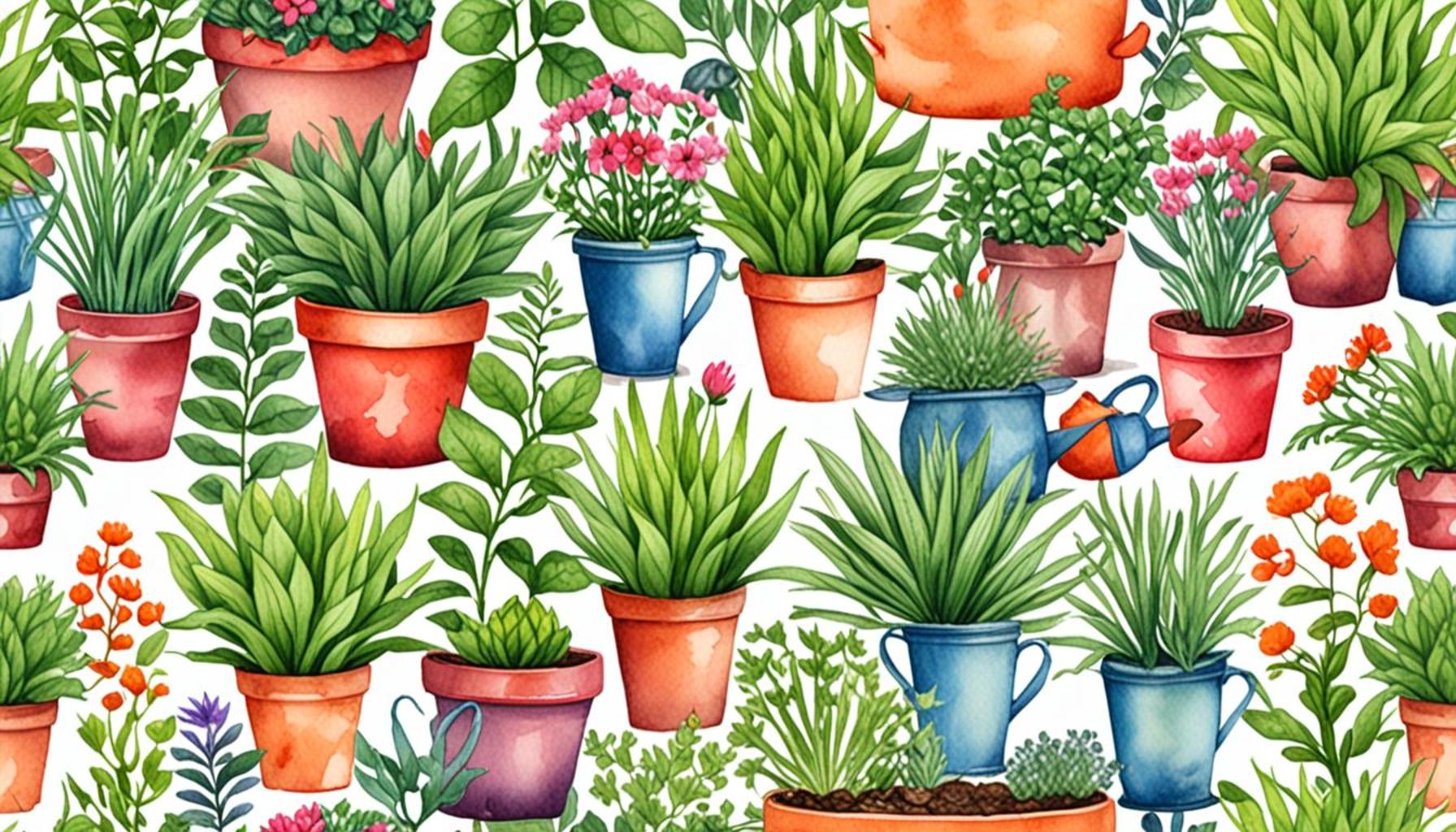Herbs for Beginners: Choosing the Right Culinary Plants for Your Home Garden

Unlocking the World of Culinary Herbs
Embarking on the journey of growing culinary herbs can transform your home cooking and elevate your dishes to new heights. With a plethora of choices available, it’s essential to choose the right plants, especially if you’re a beginner. Here’s a quick guide to help you navigate the vibrant world of herbs.
Why Grow Your Own Herbs?
Growing your own herbs not only enhances flavor but also brings a sense of satisfaction that is hard to replicate with store-bought options. Here are some compelling reasons to consider starting your own herb garden:
- Freshness: Homegrown herbs are much fresher than store-bought options. The moment you snip a sprig of basil or thyme for your dish, you experience the superior taste and aroma that only freshly harvested herbs can provide.
- Cost-effective: Growing common culinary herbs can significantly reduce your grocery bills. A small investment in seeds or starter plants leads to a continuous harvest, allowing you to enjoy fresh seasoning without the ongoing expense of pre-packaged herbs.
- Health benefits: Many herbs are rich in antioxidants and have medicinal properties. For instance, rosemary has been linked to improved digestion, while mint can aid in relieving headaches and digestive issues. Incorporating these herbs into your diet promotes wellness and adds a nutritional boost to your meals.
Essential Herbs for Beginners
When starting your herb garden, it’s wise to choose varieties that are easy to grow and maintain. Consider these popular options that can thrive with minimal fuss:
- Basil: This fragrant herb is a staple in Italian cuisine, perfect for making fresh pesto or adding to pasta dishes. Its growth benefits from rich soil and ample sunlight, making it an ideal choice for both indoor and outdoor gardens.
- Mint: Known for its refreshing flavor, mint is fantastic for infusing beverages like iced tea and cocktails. Moreover, it’s a resilient grower, often requiring less maintenance, making it friendly for novice gardeners.
- Parsley: Often seen as just a garnish, parsley deserves more recognition as a flavorful seasoning in many cuisines. Its versatility allows it to enhance everything from soups to salads.
- Rosemary: With its robust flavor, rosemary complements roasted meats and vegetables beautifully. It’s a drought-resistant herb that thrives in sunny spots, perfect for those with limited garden space.
Diving into the world of herbs is a rewarding adventure. By selecting the right plants and providing them with the proper care, you can create a thriving garden that produces delicious flavors and delightful fragrances all year round. Whether you choose to plant them in a dedicated garden bed or in pots on your windowsill, the benefits of growing culinary herbs are sure to enhance your culinary endeavors.
In summary, starting a herb garden is accessible and can yield substantial rewards. As you cultivate your plants, you’ll not only improve your cooking but also gain a deeper appreciation for the flavors that culinary herbs bring to your kitchen.

DISCOVER MORE: Click here to learn about growing aromatic herbs
Getting Started with Your Herb Garden
As you embark on your herb gardening journey, understanding how to nurture your plants is just as vital as selecting the right ones. Different herbs come with their own unique requirements but fear not—many of them are forgiving and thrive with basic care. Here’s a closer look at how to successfully grow your culinary herbs right at home.
Choosing the Right Location
The first step in establishing your herb garden is selecting the ideal spot. Most culinary herbs thrive in sunny conditions, requiring at least 6 to 8 hours of sunlight daily. Consider these options when determining where to plant your herbs:
- Indoor Herb Gardens: If you have limited outdoor space, windowsills are excellent places for growing herbs like basil and chives. Ensure they receive ample sunlight and rotate the pots if necessary to promote even growth.
- Outdoor Spaces: Whether you have a backyard or a small balcony, outdoor options can include traditional garden beds, raised planters, or hanging baskets. If the area receives sufficient sunlight, you can grow a expansive variety of herbs.
- Vertical Gardens: For those with space constraints, consider a vertical garden system. They allow you to maximize your growing area effectively and can add an attractive visual element to your space.
Preparing the Soil
Once you have chosen the perfect location, the next step is soil preparation. Most herbs prefer well-drained soil that is rich in organic matter. Here are some tips for enhancing your soil:
- Add Organic Matter: Incorporate compost or well-rotted manure into your soil to provide essential nutrients. This not only improves soil texture but promotes healthy growth.
- Check pH Levels: Many herbs favor a slightly acidic to neutral pH range (between 6.0 and 7.0). Consider testing your soil using a simple home kit available at garden centers to ensure optimal growing conditions.
- Drainage: If your soil retains too much moisture, consider planting your herbs in raised beds or pots. Good drainage is key to preventing root rot and other issues that can arise in damp conditions.
Watering Requirements
Watering plays a crucial role in herb growth. Most herbs generally prefer consistent moisture without becoming waterlogged. Pay attention to the following tips to ensure your plants receive the right amount of water:
- Check Soil Moisture: Before watering, stick your finger about an inch into the soil. If it feels dry, it’s time to water; if it’s still moist, wait a day before checking again.
- Watering Technique: Aim to water deeply and less frequently. This encourages the roots to grow deeper into the soil, making your herbs stronger and more resilient.
By selecting an appropriate location, preparing the soil effectively, and adhering to proper watering techniques, you’ll set a solid foundation for a thriving herb garden. As you nurture these plants, you will not only become more familiar with their flavors but also gain a deeper appreciation for the art of cooking with fresh herbs. Stay tuned as we delve further into some specific herbs and their culinary uses that will surely inspire your gardening adventure.
When embarking on the journey of cultivating culinary herbs, it is essential for beginners to understand the diverse options and the distinct flavors each brings to cooking. Introducing plants such as basil, parsley, and thyme into your home garden not only enhances your culinary creations but also opens the door to several rewarding experiences.Herbs are often categorized based on their common uses in the kitchen. For instance, basil is renowned for its vibrant flavor in Italian dishes, while cilantro is a staple in South American and Asian cuisine. The ability to effortlessly grow these herbs at home ensures that fresh flavors are always just a step away from your pantry. Additionally, growing your herbs allows for year-round access without the hefty price tag associated with store-bought options.Moreover, home gardening promotes a greater appreciation for food and enhances your understanding of sustainable living. Each herb has specific growing conditions and care requirements, making them an excellent choice for engaging in a hands-on learning experience about plant biology. Finding the perfect balance between sunlight, water, and soil will ensure that your herbs thrive, allowing you to enjoy the fruits of your labor in your cooking.As you progress in your gardening journey, consider experimenting with less common herbs like tarragon or chervil. These unique flavors can elevate your dishes, making them not only enjoyable but also impressive to guests. Moreover, incorporating a variety of herbs provides an exciting opportunity to delve into new culinary traditions and techniques, inviting creativity into your cooking.Check out the following table to explore more about the advantages of growing culinary herbs at home:
| Category | Benefits |
|---|---|
| Fresh Flavors | Enhances the taste of dishes without artificial additives. |
| Health Benefits | Many herbs contain antioxidants and vitamins that promote well-being. |
The journey of cultivating herbs at home is not just about the produce; it’s about nurturing a passion for gardening, cooking, and appreciating the art of flavor. Choose your herbs wisely, and you’ll be rewarded exponentially in both taste and satisfaction.
DISCOVER MORE: Click here for easy-care indoor plants that purify the air
Understanding Culinary Herb Varieties
Now that you have the groundwork laid for your herb garden, it’s time to explore which culinary herbs are best suited for beginners. Each herb has its own unique flavor profile, growth habits, and culinary applications, making it essential to choose plants that align with your cooking style and preferences. Here’s a closer look at some herb varieties that can easily thrive in your home garden.
Popular Culinary Herbs for Beginners
When starting out, it’s advisable to focus on a few tried-and-true herbs that are not only forgiving to grow but also versatile in the kitchen. Below are some popular selections that can elevate your culinary endeavors:
- Basil: A must-have for any herb garden, basil is perfect for making pesto or adding freshness to salads and pastas. It prefers warm weather and should be harvested regularly to encourage growth.
- Parsley: Renowned for its bright flavor, parsley can flourish in a variety of conditions, making it an ideal choice for beginners. It can enhance dishes ranging from soups to sauces.
- Thyme: With its earthy aroma, thyme is a great addition to a range of meats and vegetables. It is drought-resistant, requiring minimal water, making it easy to maintain.
- Chives: These onion-flavored herbs can be snipped directly from the garden and sprinkled on dishes for added zest. Chives are low-maintenance and can thrive indoors or outdoors.
- Cilantro: An essential herb in Mexican and Asian cuisine, cilantro grows quickly and can be harvested multiple times. Just be aware that it bolts easily in warm weather, so plant it during cooler seasons.
Herb Companion Planting
As you select your herbs, consider their compatibility with one another through a practice known as companion planting. This method enhances growth, repels pests, and can improve flavor. For example:
- Basil and Tomato: Not only do these two plants grow well together, but basil also improves the flavor of tomato dishes.
- Chives and Carrots: Chives repel pests that are known to damage carrots, creating a mutually beneficial relationship.
- Rosemary and Sage: Both herbs thrive in similar dry, sunny conditions, making them suitable companions in the garden.
Herb Care and Maintenance
Once you’ve chosen your herbs, understanding their care requirements is essential for their success. Here are some helpful tips to keep your plants healthy:
- Pruning: Regularly trim your herbs to encourage bushy growth. This practice not only keeps plants healthy but also provides you with a continuous supply of fresh herbs.
- Fertilizing: Most herbs benefit from light fertilization. Use organic fertilizers or compost to nourish your plants without overwhelming them.
- Pest Management: Keep an eye out for common pests like aphids and spider mites. Introducing beneficial insects such as ladybugs can help control these populations naturally.
Equipped with the right herbs and care practices, your home garden can turn into a vibrant hub of flavor and inspiration. By integrating these beginner-friendly culinary herbs, you’re not merely growing plants; you’re cultivating a connection to your food that’s both rewarding and delicious. Get ready to enjoy the fruits of your labor as you embark on this flavorful journey!
DISCOVER MORE: Click here to learn about the top garden pests
Conclusion
Starting your journey in the world of culinary herbs doesn’t have to be daunting. With a clear understanding of popular herb varieties and essential care techniques, you are well-equipped to create a thriving home garden. The herbs highlighted, such as basil, parsley, and thyme, not only lend themselves beautifully to various dishes but also serve as perfect companions in the garden, enriching both flavor and growth.
As you cultivate these plants, embrace the opportunity to experiment with new recipes, infuse your meals with fresh flavors, and fully appreciate the satisfaction of using homegrown ingredients. Remember that companion planting can optimize your space and help you foster a harmonious garden environment, proving that caring for your herbs is a valuable investment, both in the kitchen and in your outdoor space.
Moreover, the process of nurturing these herbs creates a deeper connection to your food, enriching your culinary experience while promoting sustainability. Take the first step today by choosing the herbs that resonate with your tastes and culinary ambitions. Whether observed from a windowsill or tended in a backyard garden, your herbs will not only please your palate but also inspire a lifelong love of gardening. So, roll up your sleeves, breathe in the fresh earth, and start harvesting the rewards of your efforts—one delicious dish at a time!



